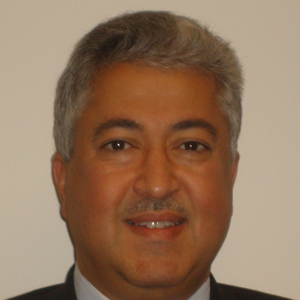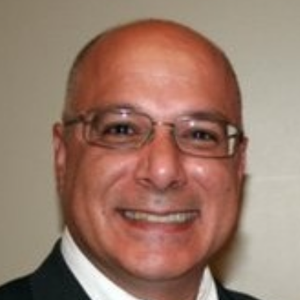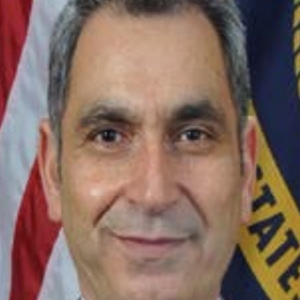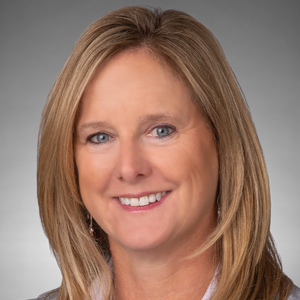The Department of Defense (DoD) plans to spend approximately $65 billion from fiscal year 2019 to 2023 on space acquisition programs — including satellites, launch vehicles, ground components, and user equipment. Building innovative satellite solutions for this market requires an understanding of procurement protocol as well as DoD and government needs. How can satellite companies focused on government markets avoid development overhead that is outside of the scope required by government? What are the various avenues new market entrants can use to engage government interests in new advanced and resilient space systems?
 Tom Stroup
Tom Stroup
As President of SIA, Tom Stroup is the trade association’s lead advocate for regulatory and policy issues of critical importance to SIA’s membership, including spectrum and licensing issues, defense and public safety matters, and export control and international trade issues. He also manages the day-to-day operations of SIA, including member communications, staff leadership, and organization of SIA sponsored events.
Prior to joining SIA, Mr. Stroup was with Shared Spectrum Company (SSC), a leading developer of spectrum intelligence technologies, where he served as CEO. For more than a decade, he served as the President of the Personal Communications Industry Association (PCIA). Previous to his position at SSC, he founded and ran several companies in the technology industry, including Columbia Spectrum Management, P-Com Network Services, CSM Wireless, and SquareLoop.
Mr. Stroup holds a BS, summa cum laude, in Public Administration from the University of North Dakota. He is also a graduate of Georgetown University Law Center where he served as Editor of the Georgetown Law Journal.
 M.G. Abutaleb
M.G. Abutaleb
Mr. Abutaleb is a seasoned executive who has been involved in various segments of the telecommunications and aerospace industries since the late ’70s. During these years, he has participated in the definition, development, and implementation of a multitude of satellite and wireless communications technologies, products, and services. In addition, he has held senior management positions with leaders in the satellite communications and aerospace industries. Mr. Abutaleb is currently CEO of Speedcast Government (formerly UltiSat), where he was co-founder and managed the progressive growth of this self-financed start-up business in 2003 through its current position as a recognized leader in the USG and G2 markets and through its sale in late 2017 to Speedcast International, an ASX listed company. He also co-founded Innovative Communications Technologies, Inc. (ICTI) in 1989 through the sale of that business to a publicly-traded company in 1999. Mr. Abutaleb holds an MSEE degree with an emphasis in telecommunications and microelectronics.
 Col. Steven J. Butow
Col. Steven J. Butow
Colonel Steve (Bucky) Butow leads the Space Portfolio for the Defense Innovation Unit (DIU) where he facilitates the US-DoD’s access to new and potentially disruptive commercial technology involving small satellites, responsive launch, space situational awareness, and reduced latency satellite communications. Colonel Butow is a former Vice Chief of the Joint Staff, California Military Department, and Commander of the 129th Rescue Wing at Moffett Field, California. His experience includes ten overseas deployments in the Middle East and the Horn of Africa supporting combat and contingency operations at the tactical and operational levels. Colonel Butow holds a Bachelor’s degree in Physics and Astronomy from San Jose State University and a Master’s Degree in Strategic Air and Space Studies from the University of Maryland. He is a rated command pilot with more than 3,500 flying hours in T-37, T-38, C-130, HC-130, and MC-130P aircraft.
 Augustine J. Ponturiero
Augustine J. Ponturiero
Augustine Ponturiero (Augie) is an experienced space systems professional with proven experience and success in business and program management, systems engineering, and operations for both commercial and military satellite communications services. Ponturiero is currently the business development lead for TriSept Corporation, an innovator in leading-edge technical and system support, space and launch mission services for the Department of Defense, commercial and government customers.
Augie graduated from the US Naval Academy, received his Commission in the US Navy, and served in a wide variety of operational and technical leadership billets throughout his Navy career, including several operational deployments. His commercial business career includes responsibility for global satellite communications operations and services management – including near/far ground architecture and system interfaces, customer service and requirements development, and business and strategic leadership for space-based systems and services.
Key areas of expertise include end-to-end management of multi-vendor operational communications services; space-based services development and deployment; and disaster/military/contingency operations communications architecture development and delivery.
 Gurpartap “GP” Sandhoo
Gurpartap “GP” Sandhoo
Dr. Sandhoo is the Superintendent of the Spacecraft Engineering Department of the Naval Center of Space Technology (NCST) at the U.S. Naval Research Laboratory (NRL). As the Superintendent, he provides executive direction and technical leadership in the development of policies and objectives necessary in conducting research, design, and development in the areas of satellite and orbital transfer vehicle systems, with an emphasis on new and advanced space systems and technologies to improve the performance of the Navy mission.
The spacecraft engineering department is responsible for executing a $170M program, including the development of cutting edge space capabilities in satellite servicing, space robotics, and satellite operations.
After working at NASA’s Johnson Space Center, Johns Hopkins University’s Applied Physics Laboratory, and in industry, Sandhoo began his career at NRL in 2005 as a senior aerospace engineer on the Operationally Responsive Space initiative. He progressed into broader roles at NRL, including time as the science advisor for the U.S. Navy’s Fifth Fleet in Bahrain, and as a member of Naval Warfare Integration Group (N00X) on the staff of Chief of Naval Operations.
He holds a Bachelor’s degree in mechanical engineering from the University of Maryland, a Master’s degree in electrical engineering from Johns Hopkins University, Master’s from the U.S. Naval War College, a Master’s and a Doctorate in Aeronautics and Astronautics from George Washington University, and is an MIT Seminar XXI Fellow. Since 1986, he has served in uniform in the U.S. Marine Corps and U.S. Navy. Currently, Sandhoo is a Captain in the U.S. Navy Reserve as an Engineering Duty Officer. He is the recipient of numerous personal, unit, and campaign awards, which are all a tribute to the Sailors, Marines, and civilians he served alongside throughout his Navy, Marine and civilian career. Of them all, he most treasures his peer-awarded Battalion Marine of the Year Award.
 Kay Sears
Kay Sears
Kay Sears is the Vice President and General Manager of the Military Space line of business for Lockheed Martin Space. In this capacity, Kay has general management responsibility for critical national security space programs including Advanced Extremely High Frequency (AEHF), Defense Meteorological Space Program (DMSP), Global Positioning System (GPS), Mobile User Objective System (MUOS), Space Based Infrared Systems (SBIRS), Space Protection and other Department of Defense space programs.
Previously, Kay was the Vice President of Strategy and Business Development where she was responsible for growing the Space business with a comprehensive strategy to develop new markets and expand core mission areas. She also led strategic planning, advanced technology concepts and new business acquisition efforts for each of the Space lines of business.
Prior to joining Lockheed Martin, Kay served as president of Intelsat General. In this role, Kay was responsible for implementing the company’s strategic and operational plans and for the overall mission of providing a range of sustainable, cost-effective and secure communication solutions to government and commercial customers.
Before joining Intelsat, Kay helped launch government services business units at both G2 Satellite Solutions and Verestar. With nearly three decades of experience, Kay is a respected leader in the space and satellite communications industry and has extensive experience in rapid-response solutions for both military and civil agencies of the U.S. government.
In 2009, Kay was appointed to the President’s National Security Telecommunications Advisory Committee to provide information, technical expertise, advice and guidance regarding issues that may affect national security telecommunications capabilities.
Kay has a B.S. in marketing and economics from the University of Richmond and an MBA in Information Systems from George Washington University.